
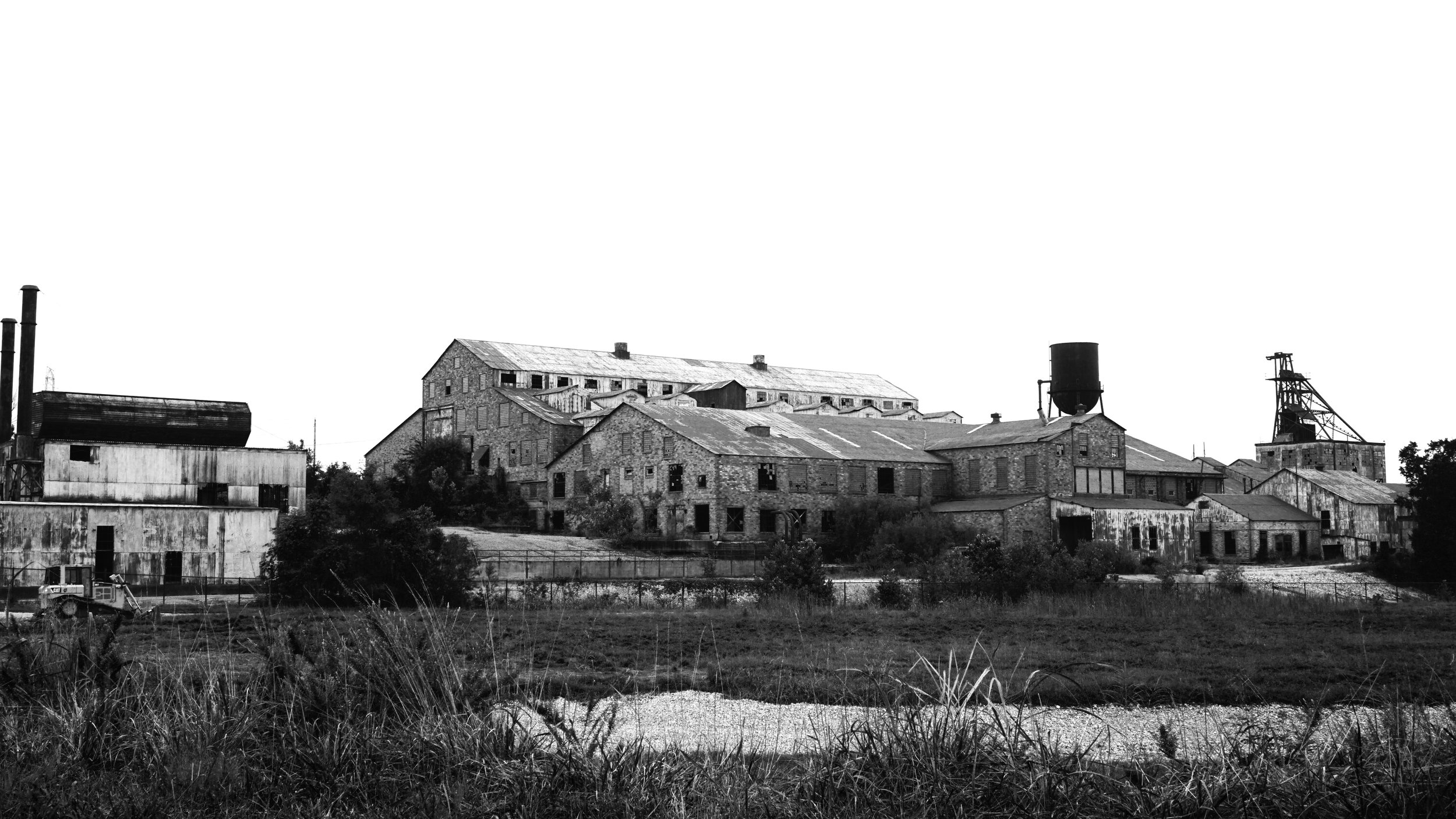
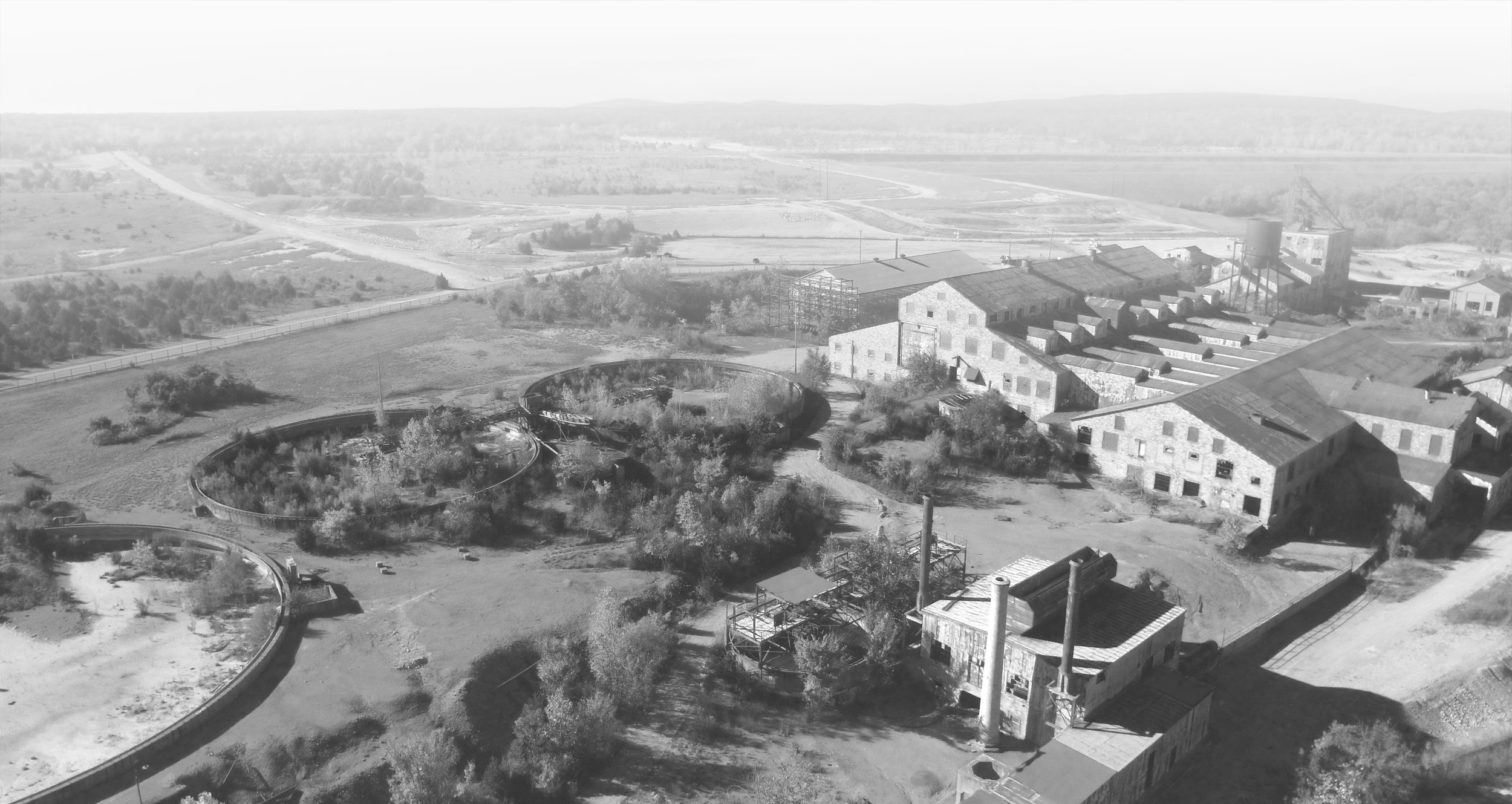
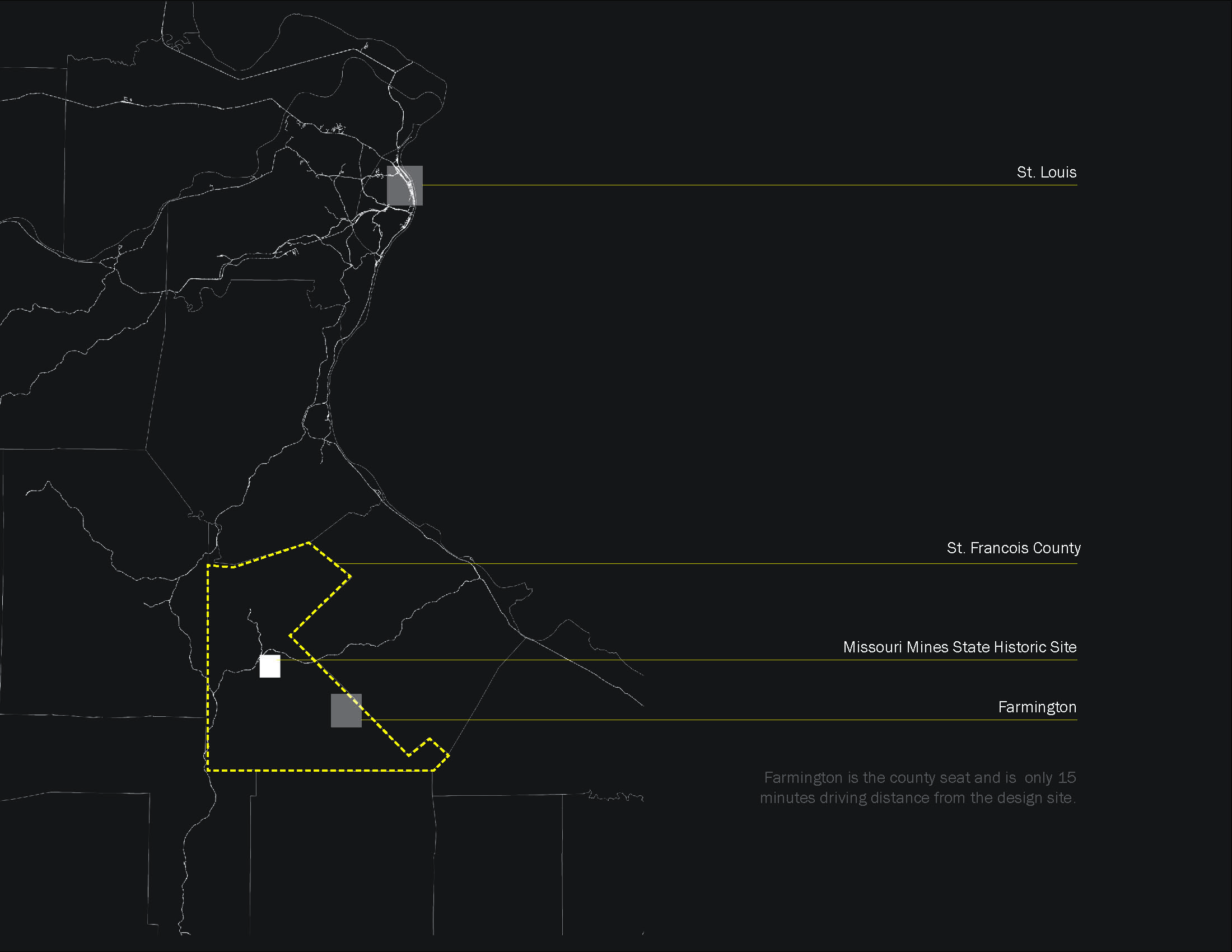
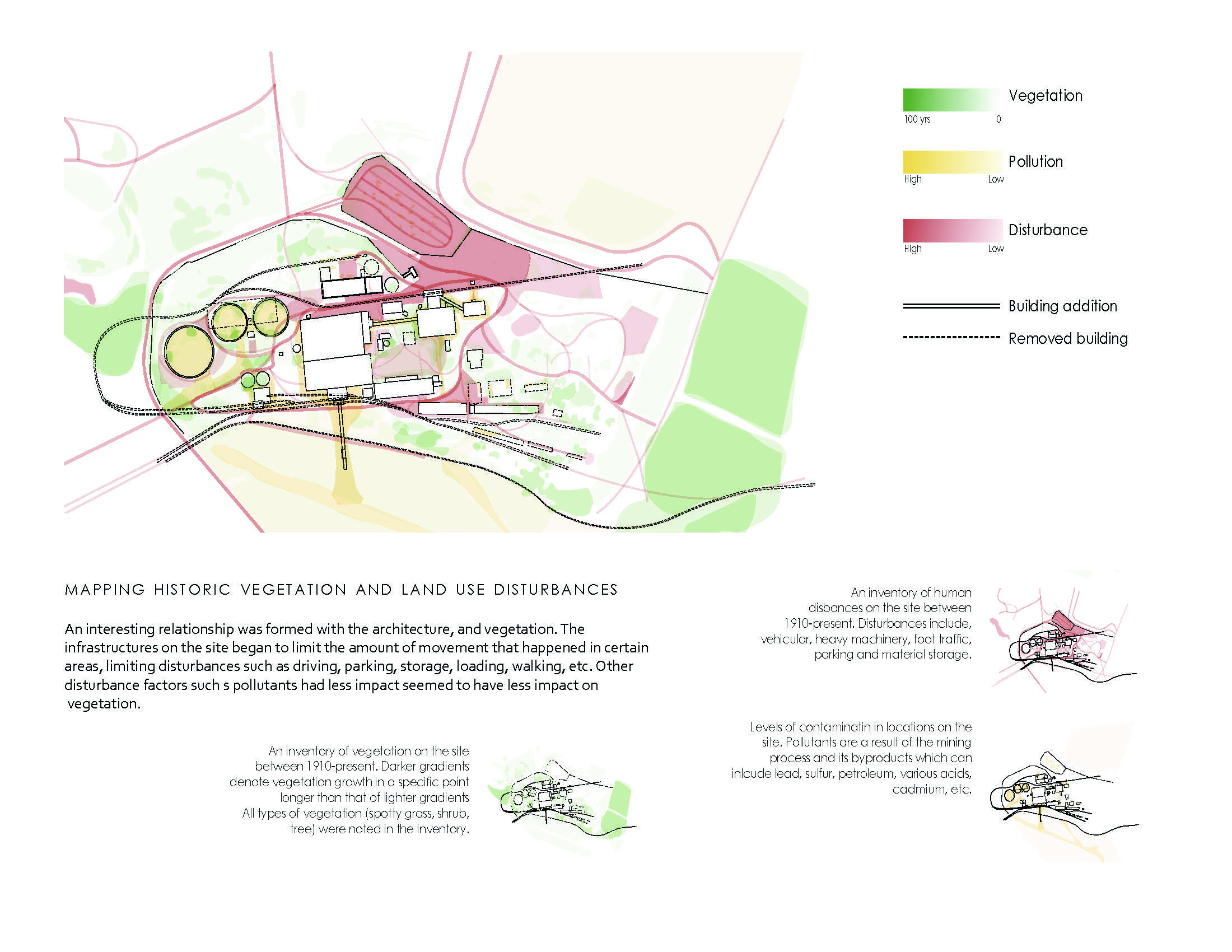
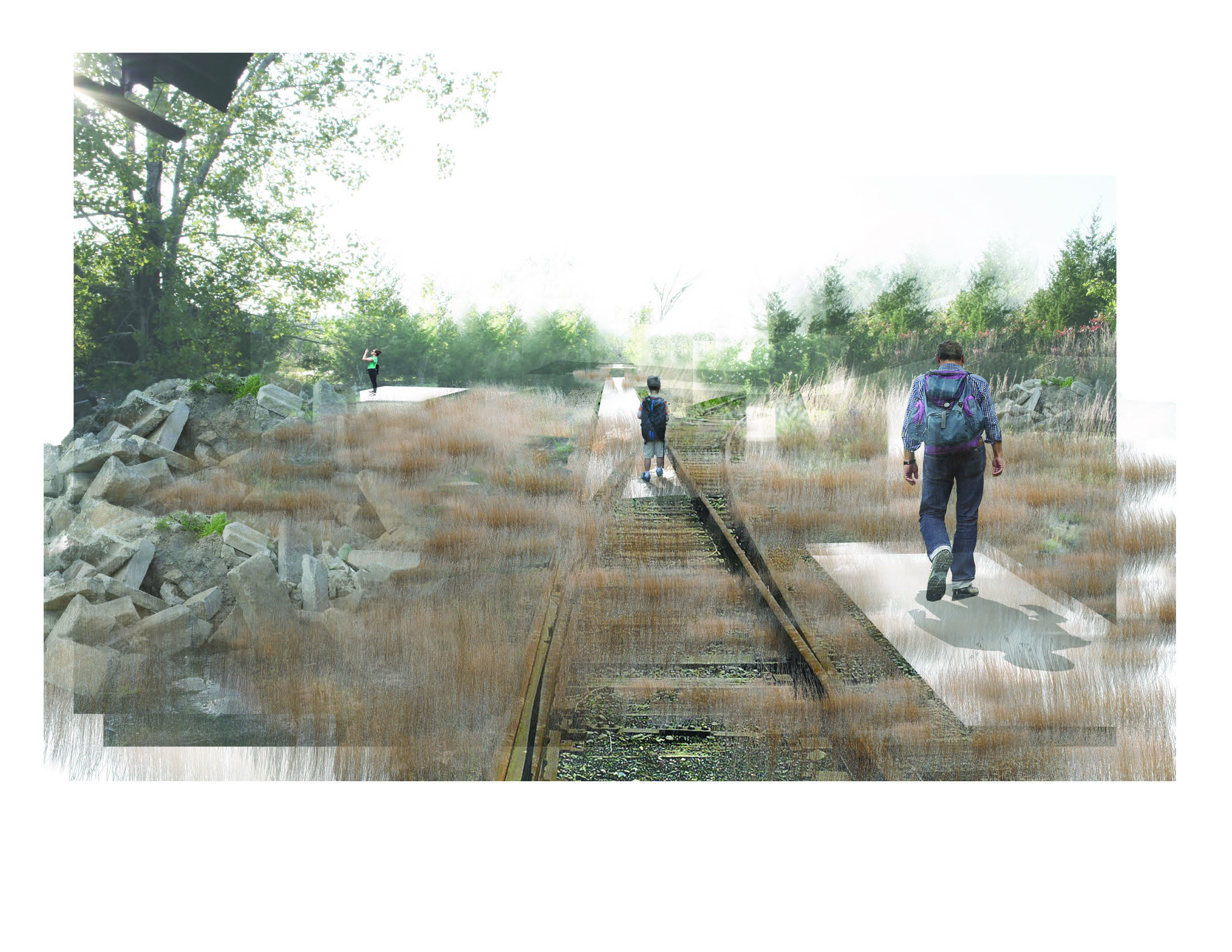
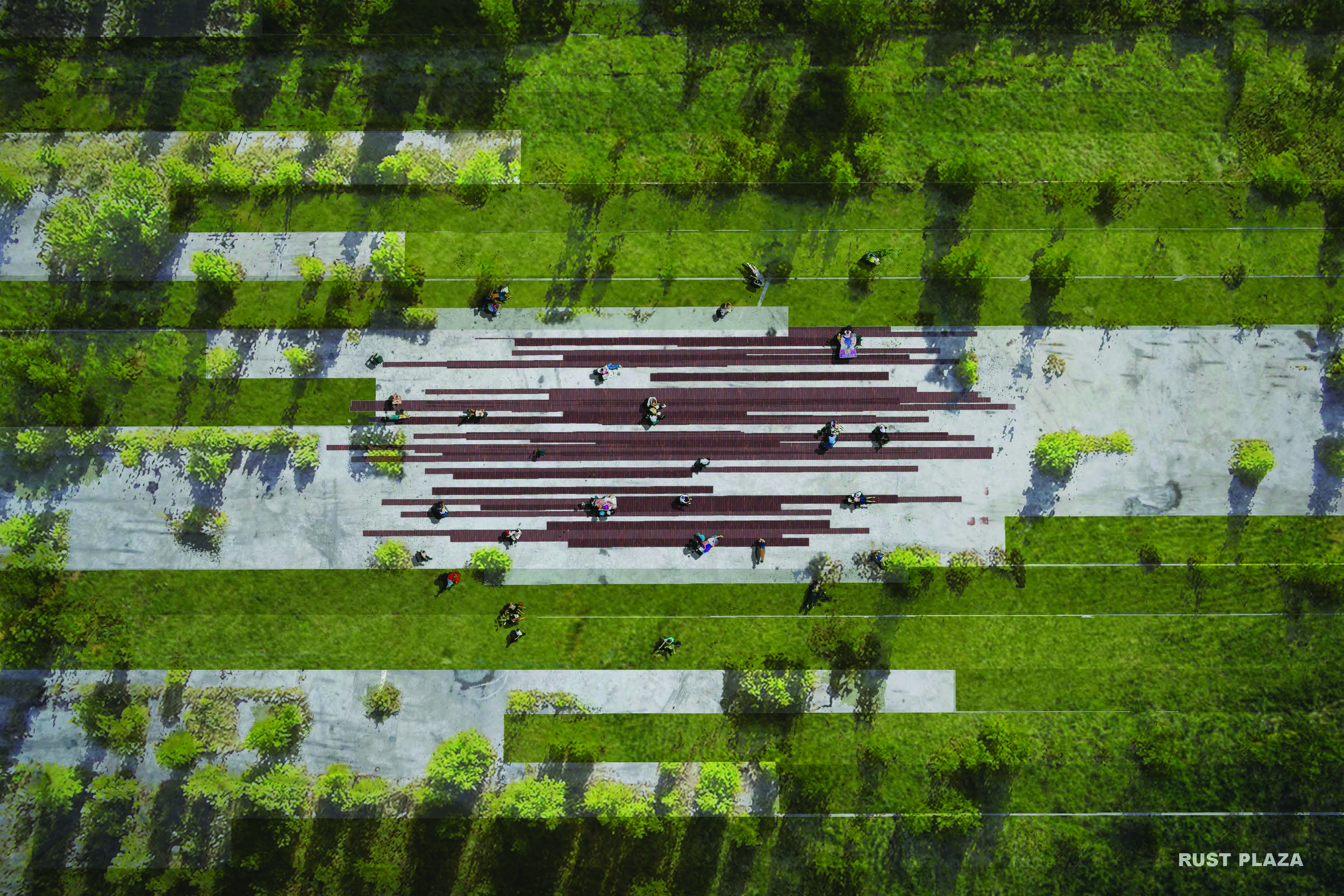

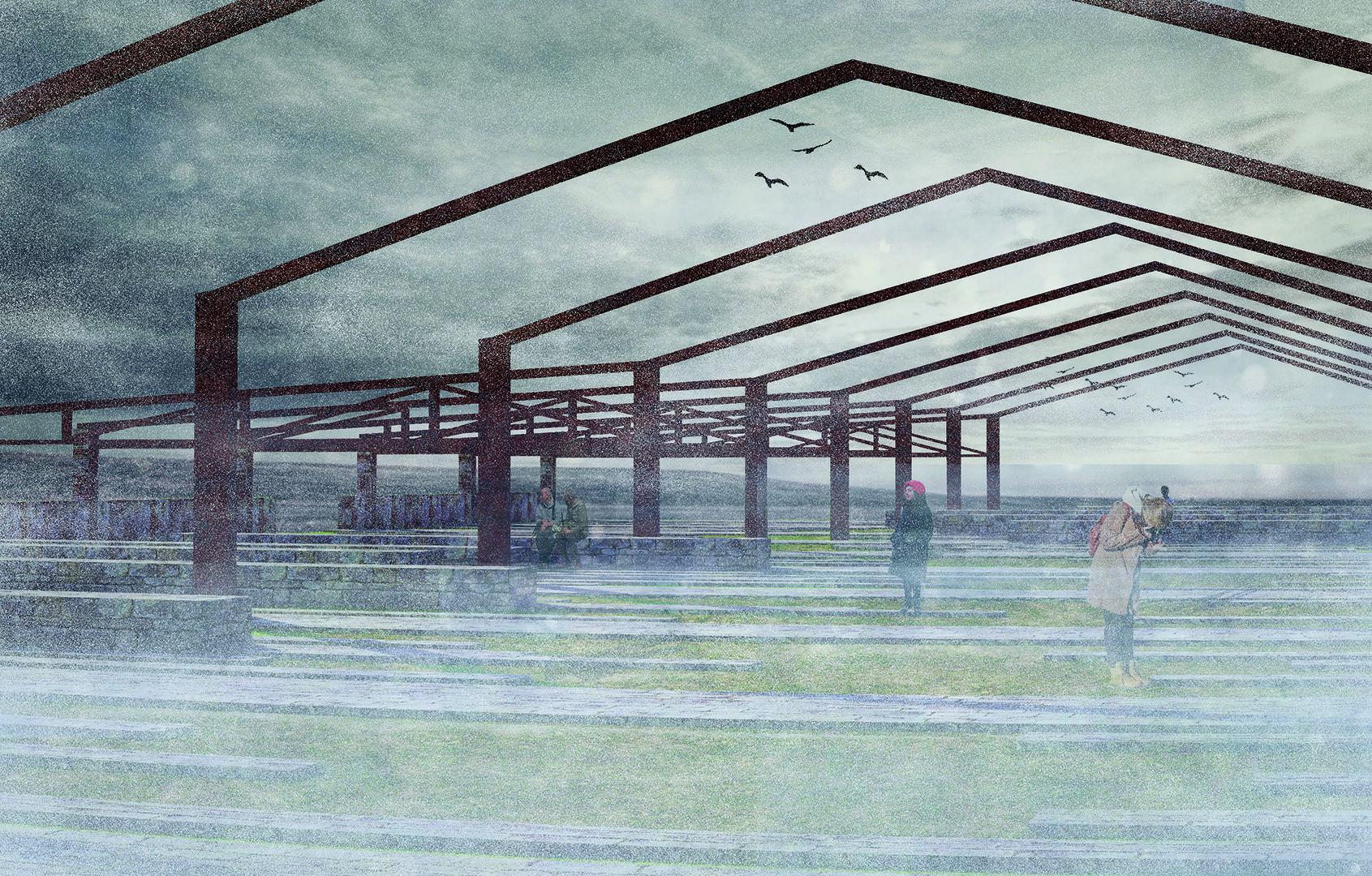

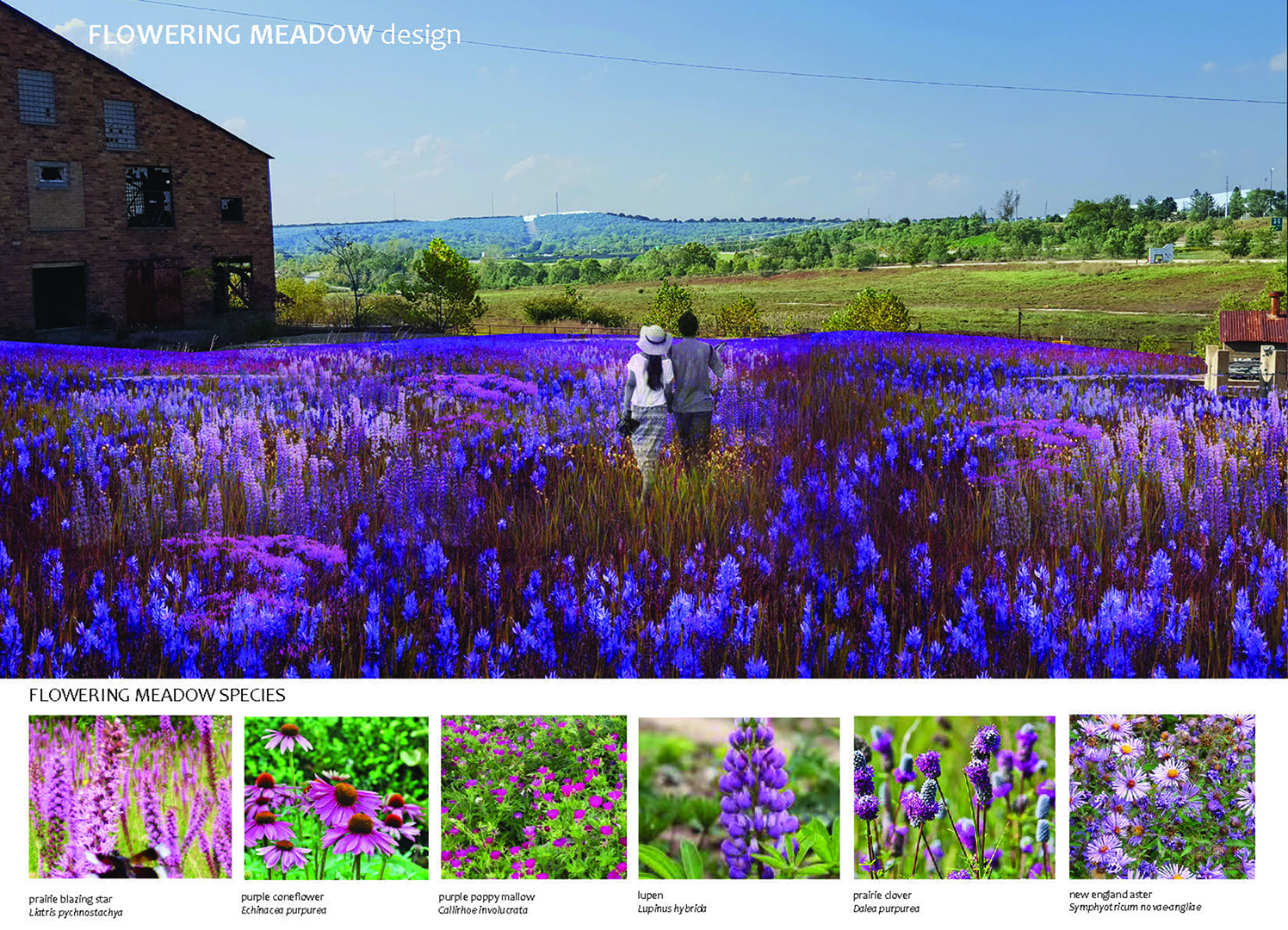
LA8201 Anthropocene Futures: Old Lead Belt (Ozarks, MO)
University of Minnesota Department of Landscape Architecture. Fall 2016.
Instructor:
Matthew Tucker, ASLA
Assistant Professor, Department of Landscape Architecture
mjtucker@umn.edu
Throughout the 2016 fall term, the “Old Lead Belt” district of Missouri Ozarks region provided the setting for the second year UMN|LA graduate design studio. Located approximately 1 hour south of St. Louis, the district is comprised of a network of small towns associated with lead mining and closely interspersed among the rolling landscape of the eastern Ozarks. Lead mining in the area dates back to Euro-American settlement and the earliest mining consisted of small surface mines scattered throughout the landscape wherever the lead ore was near the surface. In the early 20th century the district attracted the investments of American industrialists and- along with advancements in mining technology- the district quickly became the leading producer of lead ore for over six decades. Today, little mining activity remains in the area, but the legacy of lead mining is prevalent in the place names, special events and the landscape itself. Mining has left a complex environmental, ecological, and cultural history that poses significant challenges and opportunities for the future of the district and this risk is made visceral in the area's designation as a US EPA Superfund site.
Student work examined the potential future alternatives for a portion of the district including the Missouri Mines Historic Site (MMSHS). The 25-acre site includes the structures, equipment and site of the former Federal Mill No.3 complex and over 300-miles of (now flooded) underground mines. The project context and scope focused upon the consideration of alternative futures of a landscape that is emblematic of the Anthropocene. Significant programmatic challenges and opportunities are readily visible at the outset. Some of these included a legacy of lead contamination, gradual loss of miner employee population and oral history, limited public access to a site with distinct industrial appeal, and the larger question of how sites like MMSHS are considered through the lens of the Anthropocene.